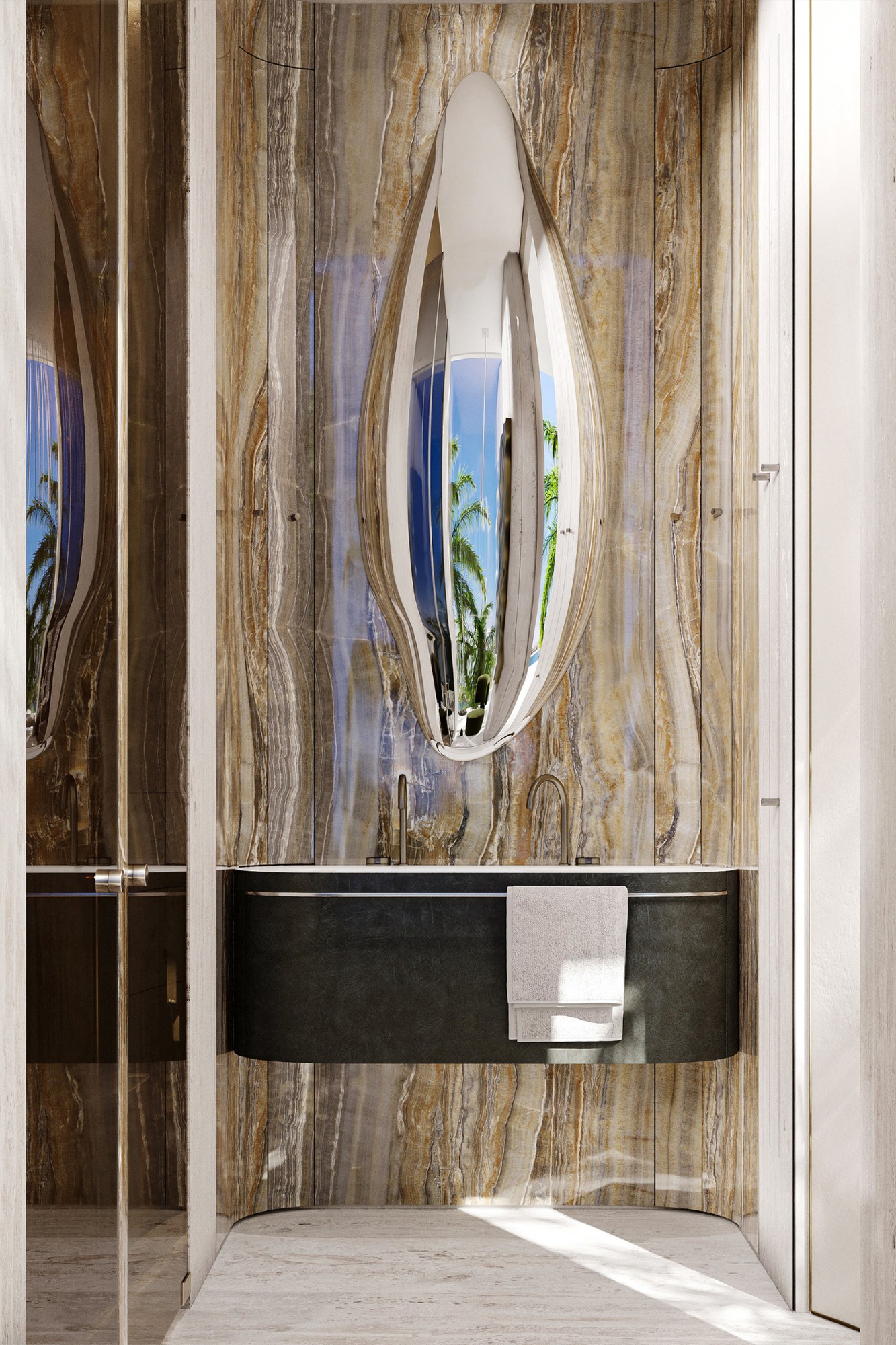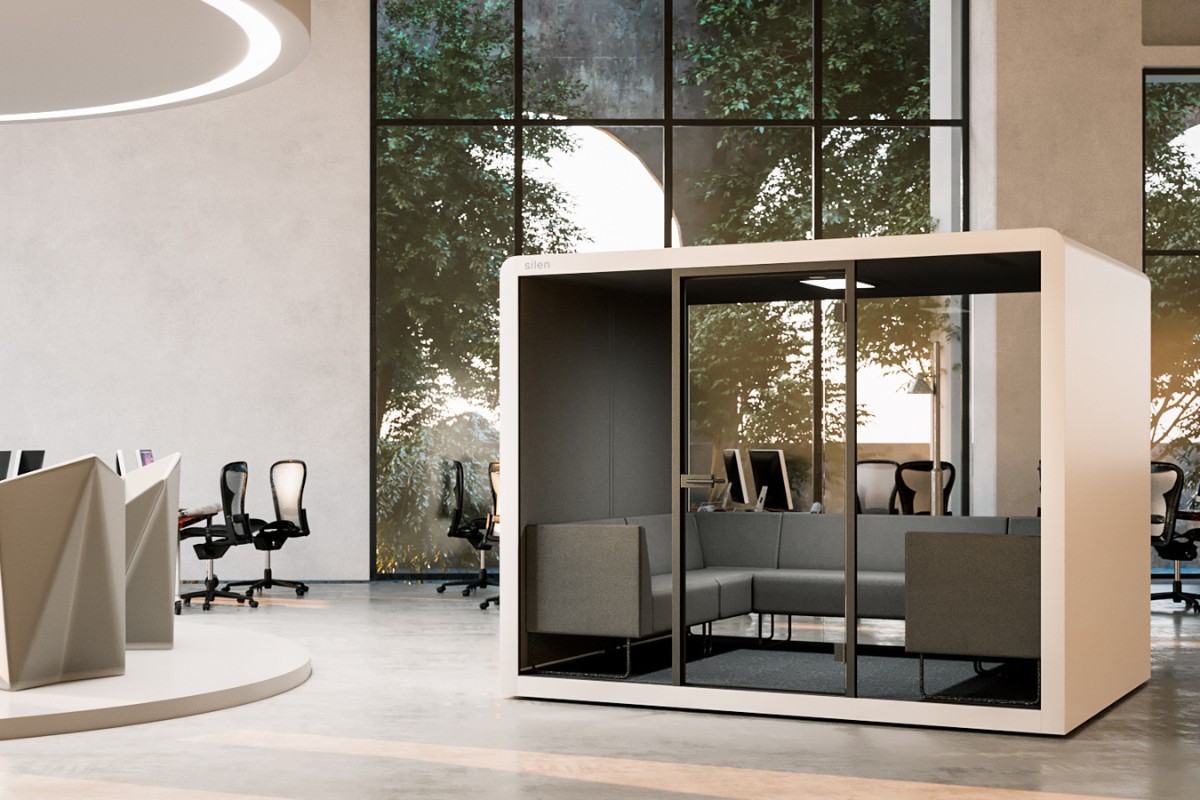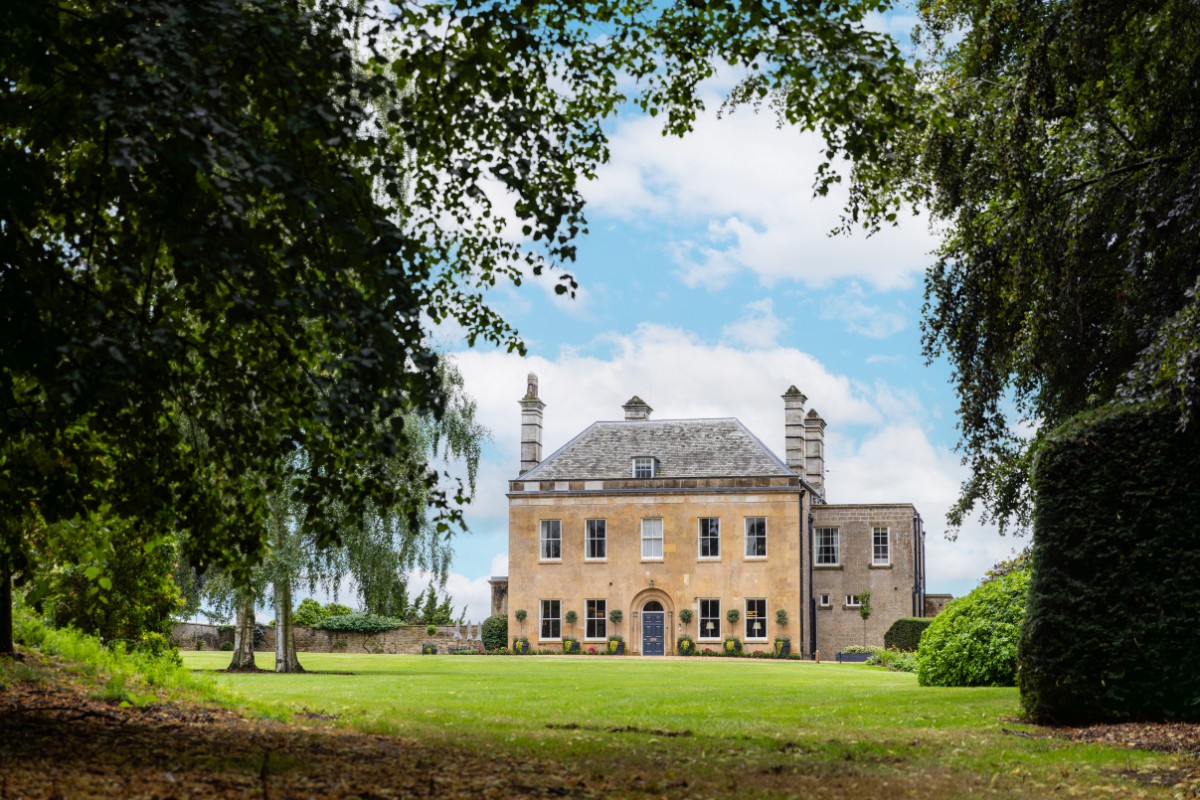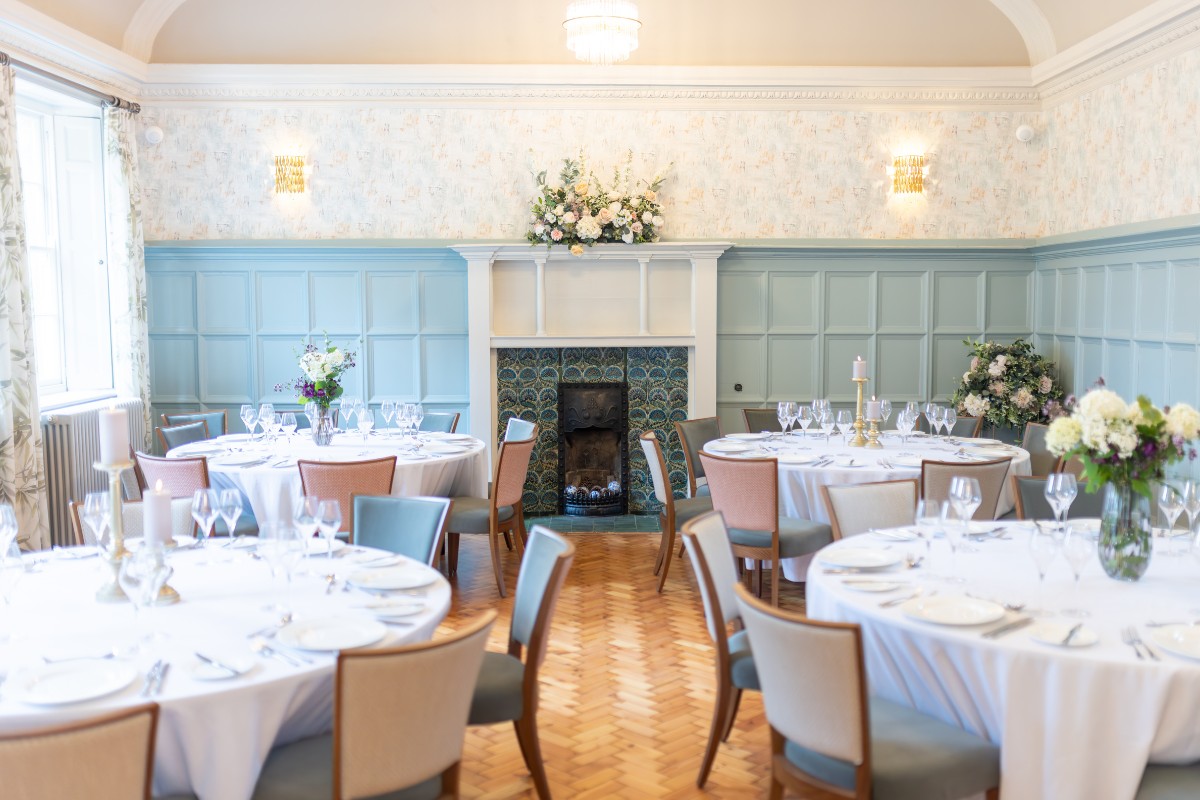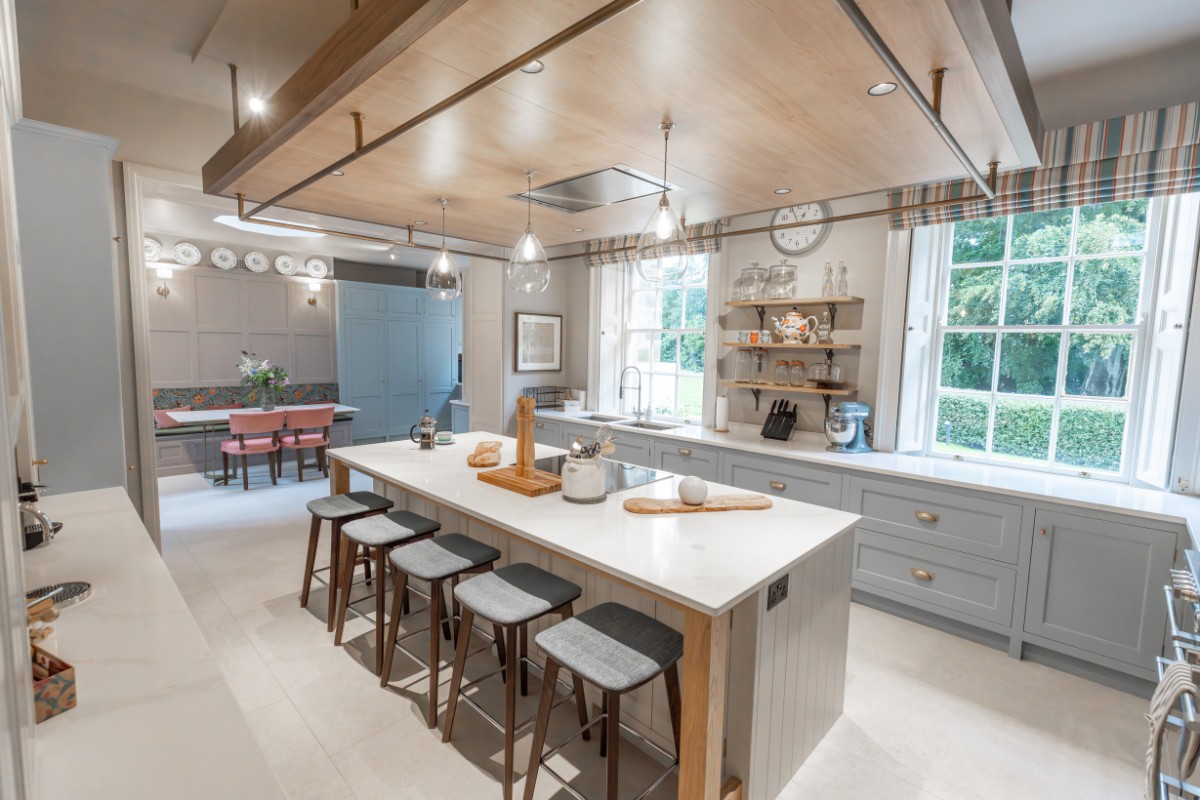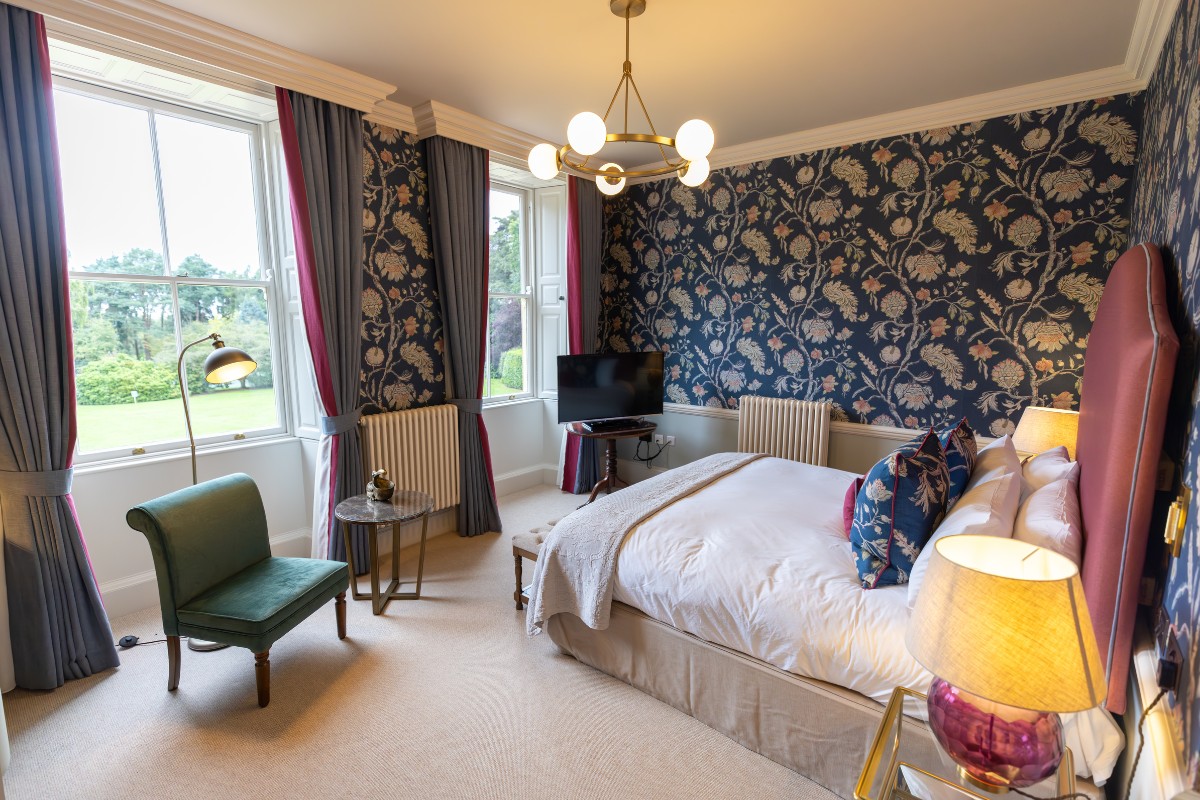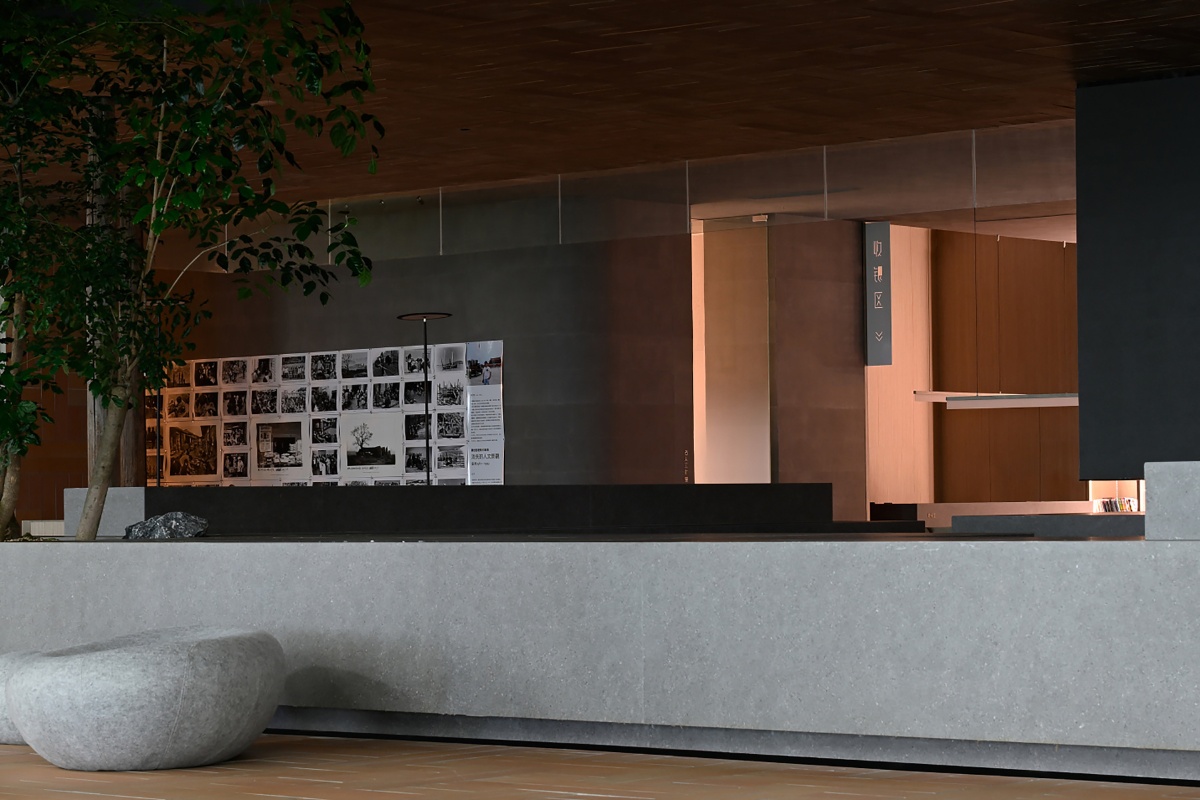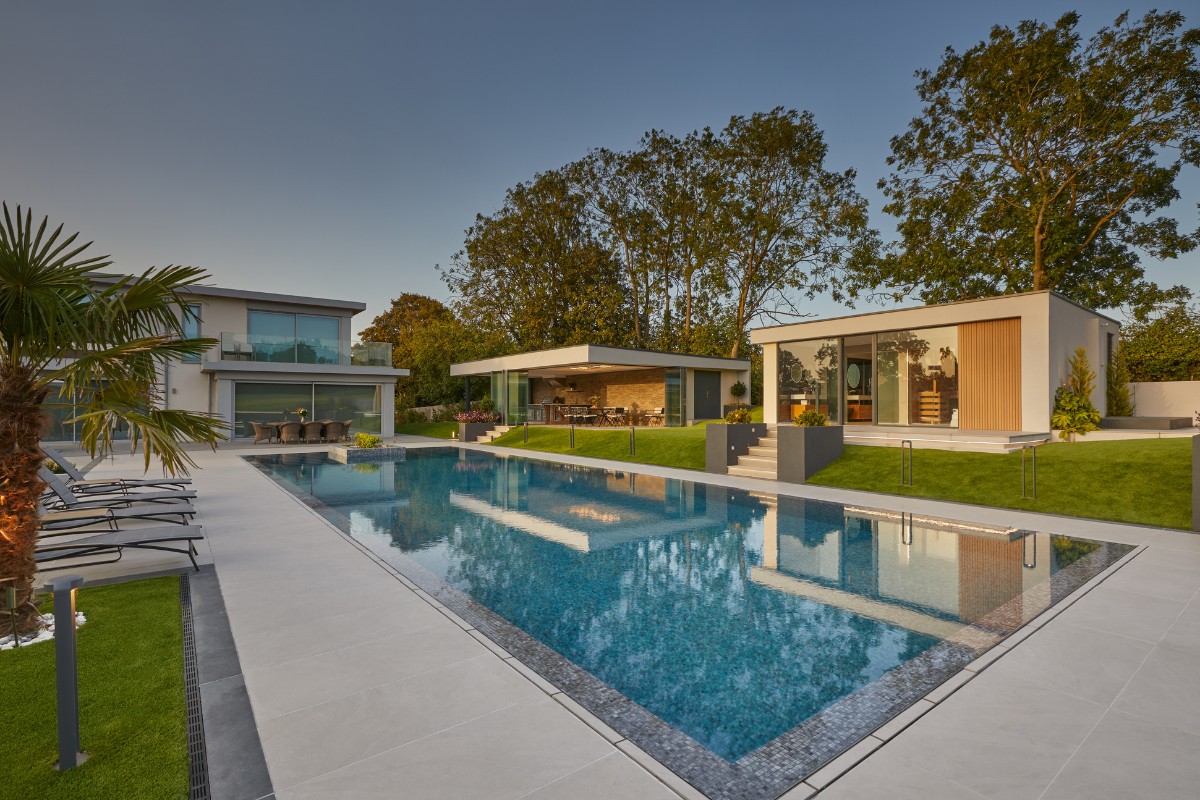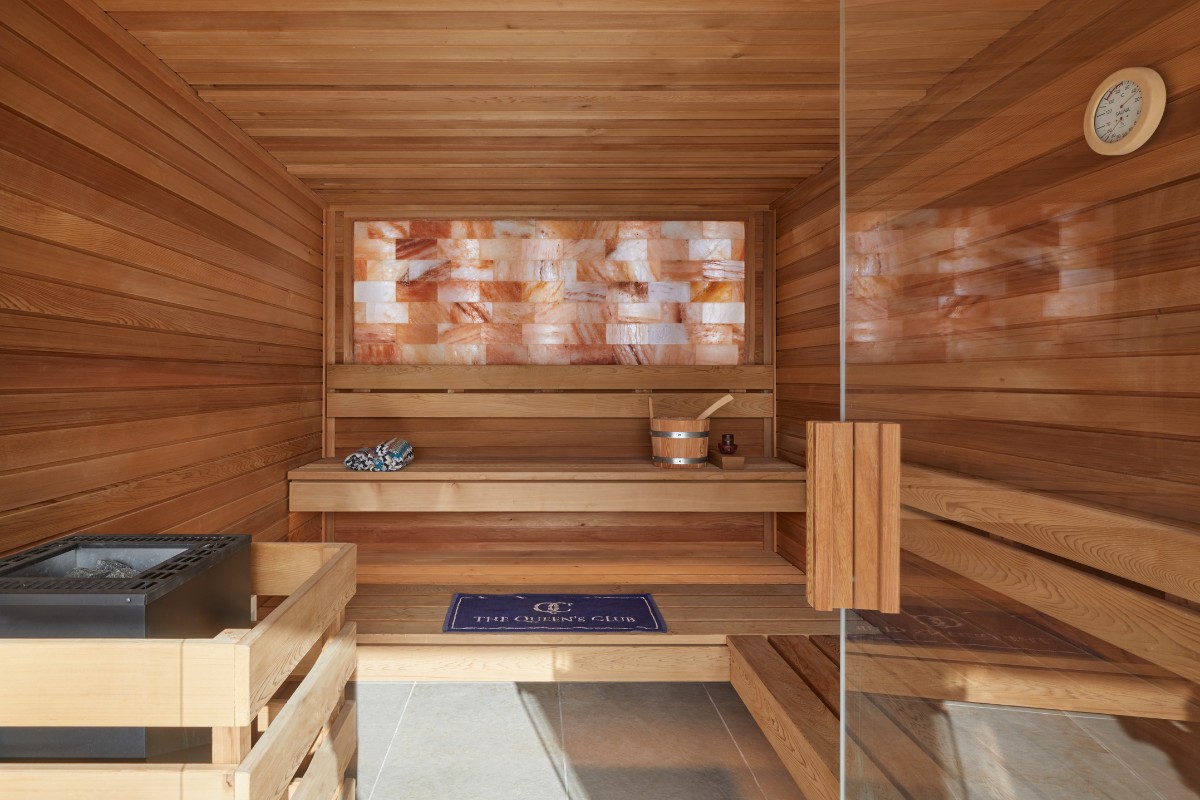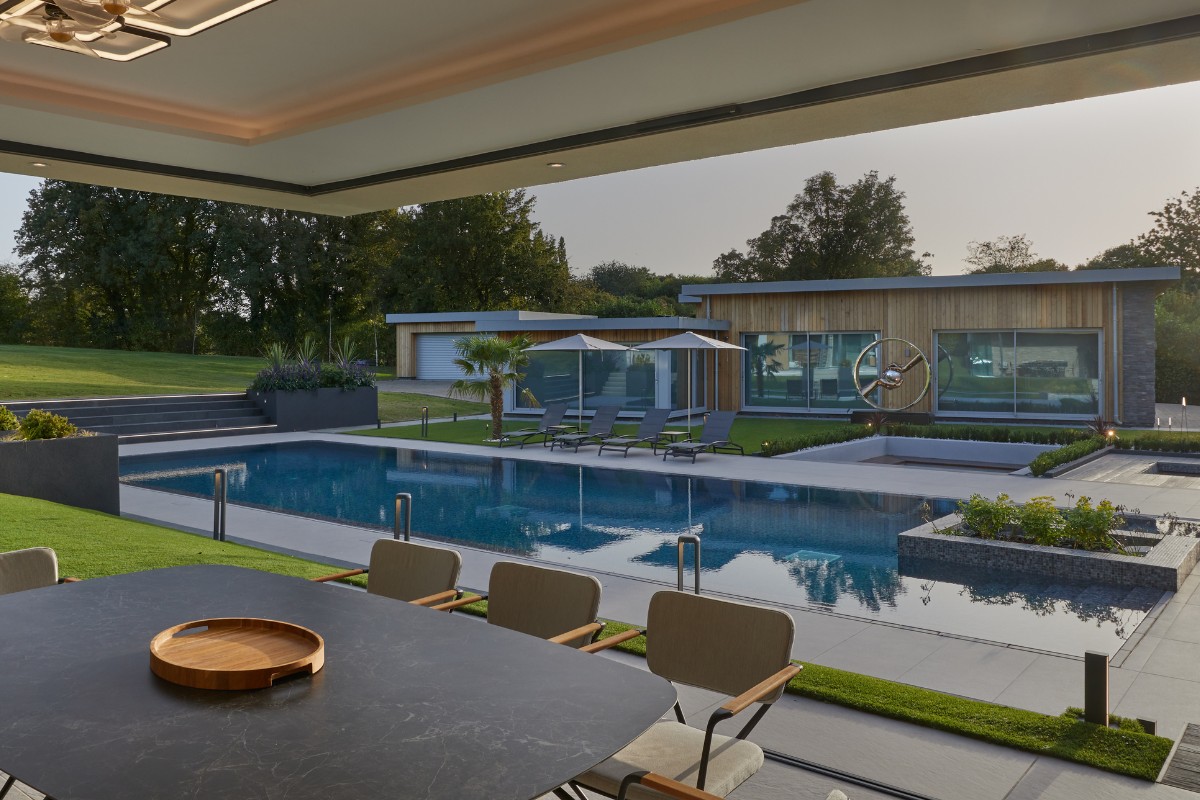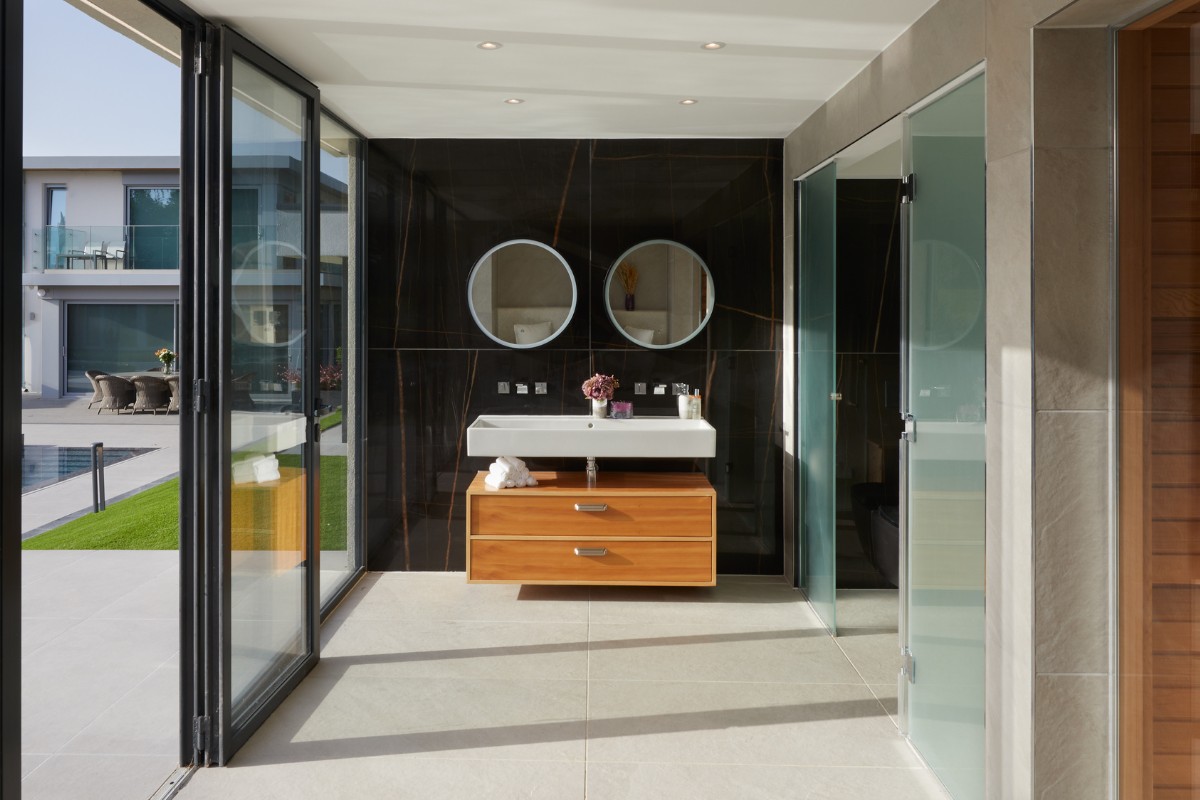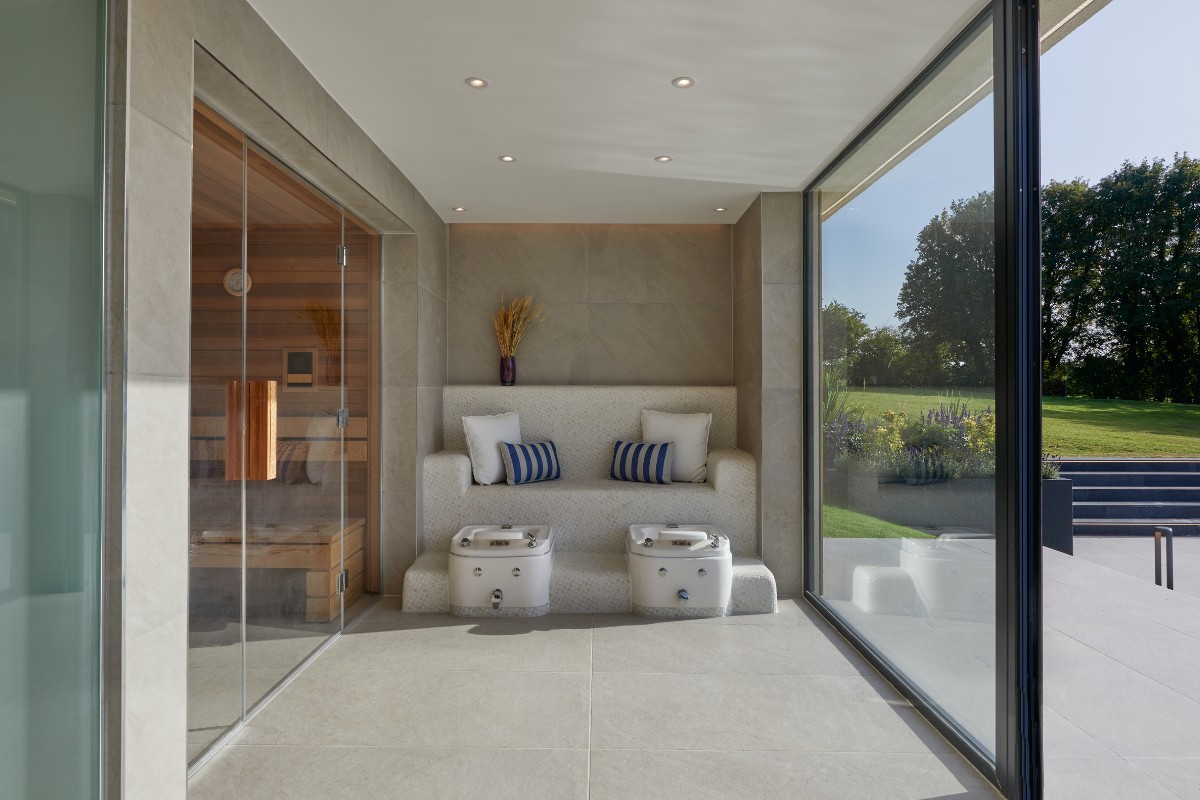What inspired the design of the project?
The Early Years library is based around the theme of an enchanted and whimsical forest, aiming to encourage exploration and captivate the imagination. The elements and materials employed create a warm, welcoming yet exciting environment. Alongside this, the layout and forms of the space were based on the topical forms of an ordinance survey, adding a 3D dynamic to the library. Unlike many spaces designed for children, the expected use of bold primary colours have been eschewed in favour of a base palette of neutral and earthy tones employed across a variety of surfaces including a robust vinyl plank on the floor cut into waves of soft greys, browns and greens to mimic the forest floor, a soft polka dotted rose toned inset carpet invoking the coat of a whimsical animal and a soft mushroom colour for the exposed ceiling surfaces and services. Blue/green lacquered shelving lines the perimeter, softened with back panels in warm oak. Although small in size, every corner of the library has been carefully imagined and designed to its full potential. The space is divided into three zones: the centrally located Story Time Circle; the Communal Activities Corner; and the gently stepped and striated Shelving and Reading Platforms resembling the topographical contours of an ordinance survey map. These functional and ergonomic feature elements have been custom designed for these zones to enhance learning and participation and to spark the imagination.
The experience is further magnified by a mirrored ceiling, creating the illusion of endless volume. Special attention has been paid to the treatment and design of the ceiling as young children are most comfortable lying on their backs when reading. The Early Years library is a calming and enchanting space which through its carefully considered layout, colour scheme and both functional and whimsical design elements, encourages curiosity, discovery and learning.
In the Primary and Secondary library there was a need to clearly define each space to ensure they appealed to each age group. The primary students’ zone on the right at entry is clearly defined by a petrol blue ceiling, walls, carpet and joinery elements. An exciting yet functional series of bespoke, tiered platforms, create an interactive versatile environment for students to sit, gather or recline while reading. The books are integrated within the risers of the steps and are mindfully grazed with soft LED lighting. A large, custom-designed, organic-shaped table anchors the space centrally and is used as the main gathering point for communal activities under the delicately preserved indoor tree.
The secondary students’ zone on the left, is defined by the dark red exposed ceiling and the red “living room” in the centre of the space which is flanked by long communal work tables either side. The “living room” element is a self-contained room with raised floor, walls and ceiling which has been created as a device to transport the students into a cosy residential environment where they are surrounded by warmly lit bookshelves, comfortable lounge seating, rug, pendant and glowing wall sconces.
























